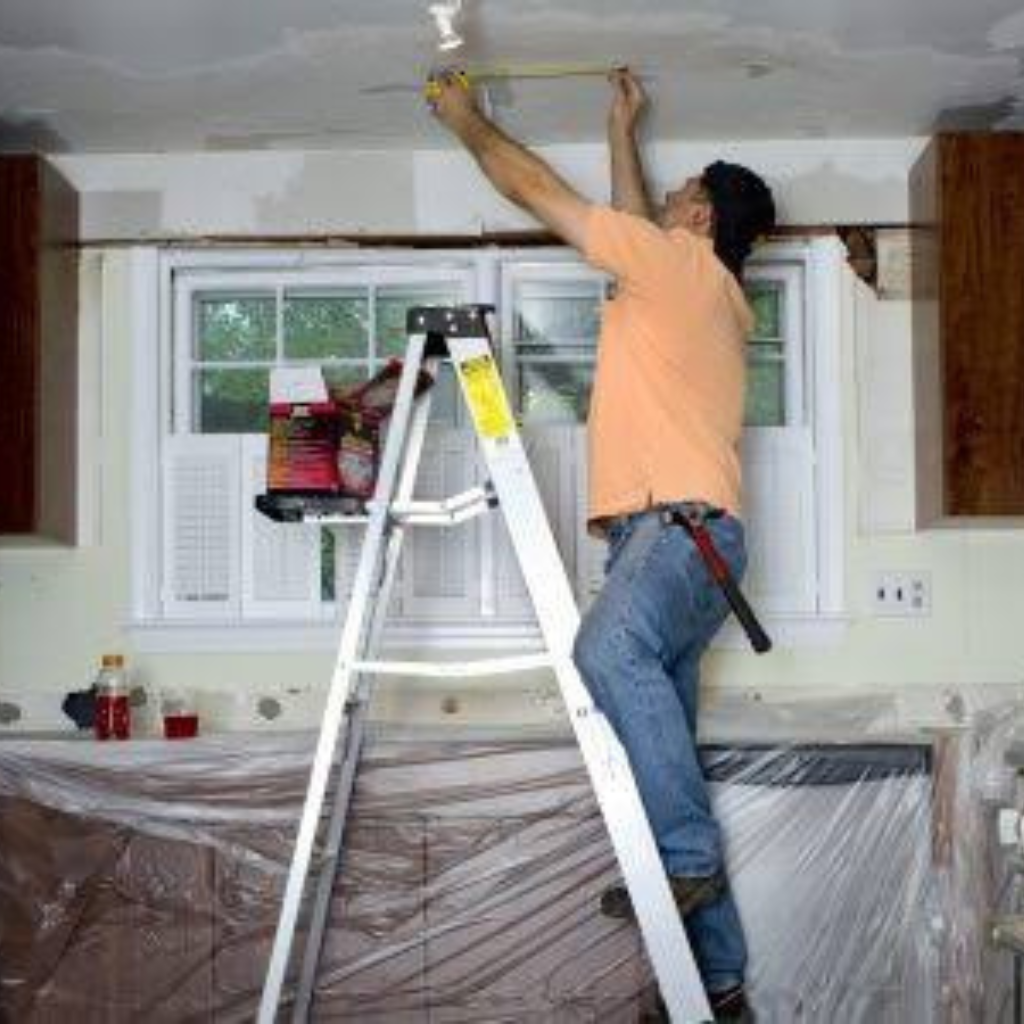What should be on a maintenance checklist?

Maintenance is essential to keeping equipment running smoothly and efficiently. Whether you’re a homeowner, a small business owner, or a large corporation, having a maintenance checklist can help you stay organized and on top of routine maintenance tasks.
Why You Need a Maintenance Checklist
A maintenance checklist ensures you remember important maintenance tasks, which can lead to breakdowns and costly repairs. A checklist can also help you track when maintenance was last performed and when to complete it again. By performing regular maintenance, you can extend the life of your equipment, improve its performance, and save money in the long run.
Why Is a Maintenance Checklist Important?
A maintenance checklist is essential for property owners for several reasons, including:
- Preventative Maintenance: A checklist helps you stay on top of maintenance tasks and prevents minor issues from turning into significant problems. Regular maintenance saves money in the long run and prevents emergency repairs.
- Time Management: A checklist allows you to schedule maintenance tasks, which saves time and ensures all necessary work is completed on time.
- Safety: Regular maintenance ensures your property is safe for occupants and visitors.
What Should be on a Maintenance Checklist?
A maintenance checklist should include the following tasks:
HVAC System: Schedule regular maintenance for your HVAC system, including cleaning filters, checking ducts for leaks, and inspecting the unit for any signs of wear and tear.
Plumbing: Check for leaks, repair or replace faulty pipes, clean drains, and ensure your water heater is functioning correctly.
Electrical: Check for loose connections, replace outdated wiring, and ensure all electrical systems are up to code.
Roof: Inspect the roof for any damage, including leaks, cracks, and missing shingles.
Landscaping: Maintain your property’s landscaping by mowing the lawn, pruning bushes and trees, and removing dead or dying vegetation.
Exterior: Check for any cracks or holes in the exterior walls, repair damaged areas, and ensure all doors and windows are properly sealed.
Interior: Inspect your property’s interior for any signs of wear and tear, such as peeling paint, damaged flooring, or broken fixtures.
Appliances: Check all appliances, including the refrigerator, stove, dishwasher, and washer/dryer, for any signs of wear and tear, and replace or repair them as necessary.
How to Create a Maintenance Checklist
Maintenance is an essential part of keeping any system functioning at its best. Regular maintenance is necessary to ensure they work efficiently and avoid costly repairs, whether a car, home appliances, or website. One of the best ways to keep track of your maintenance tasks is to create a checklist.
Identify the systems that need maintenance – The first step in creating a maintenance checklist is to identify the systems that need care. This could be anything from your car, home appliances, HVAC systems, plumbing, electrical systems, or even your website. Start by making a list of all the systems that you need to maintain.
Determine the maintenance frequency – Once you have identified the systems needing maintenance, the next step is to determine the frequency. Some systems may require daily, weekly, or monthly maintenance, while others may need care once or twice a year. Make sure to research the recommended maintenance frequency for each system and add it to your checklist.
Create a checklist template – Now that you have identified the systems that need maintenance and the maintenance frequency, it is time to create a checklist template. This template will be used to keep track of all the maintenance tasks that need to be performed. Ensure to include columns for the maintenance task, the frequency, the date of the last maintenance, and the date of the following maintenance.
Include detailed maintenance tasks – To ensure that your systems are functioning at their best, and it is essential to include detailed maintenance tasks on your checklist. For example, if you are maintaining your car, your checklist should include changing the oil, checking the tire pressure, and checking the brakes.


Importance of Regular Home Maintenance
Regular home maintenance is a crucial homeownership aspect that many people overlook. Home maintenance regularly inspects and repairs your home to prevent damage or problems.
The Importance of Regular Home Maintenance – Your home is a significant investment, and it is essential to protect that investment by maintaining it regularly. Regular maintenance ensures that your home stays in good condition and prolongs its lifespan. It also helps to prevent significant damages that could cost you a lot of money in the long run.
Protect Your Investment – Regular home maintenance is essential to protect your investment. Your home is one of the biggest investments you will make in your lifetime, and you want to ensure it remains in good condition. Neglecting routine maintenance can lead to more significant problems down the road, such as a leaking roof, foundation issues, or electrical problems. These problems can be costly to repair and may even require extensive renovations. By performing regular maintenance, you can catch problems early on and avoid expensive repairs.
Increase Home Value – Regular maintenance can increase your home’s value. When it comes time to sell your home, buyers will look for a well-maintained property. A home that has been neglected will likely have a lower value than one that has been well-maintained. Regular maintenance can help ensure your home retains its value and remains a sound investment.
Prevent Health and Safety Hazards – Regular home maintenance can help prevent health and safety hazards. Neglected homes can harbor mold, mildew, and other harmful bacteria that can cause health problems, particularly for those with allergies or asthma. Regular maintenance can help prevent these issues by keeping your home clean and dry. Additionally, regular maintenance can help identify potential safety hazards, such as faulty wiring or a malfunctioning HVAC system, and address them before they become dangerous to you and your family.
Reduce Energy Costs – Regular maintenance can help reduce your energy costs. A well-maintained home is more energy-efficient, meaning you will use less energy to heat and cool your home. This translates to lower energy bills and more money in your pocket. Regular maintenance ensures your HVAC system functions correctly, and your home is adequately insulated. By taking these steps, you can reduce your energy consumption and save money.
Creating a Home Maintenance Checklist: Keeping Your Home in Tip-Top Shape
At Budget Home Services Pro, we understand your home is your biggest investment. Regular maintenance is crucial in preserving its value and ensuring your family’s safety and comfort. That’s why we’ve created this comprehensive home maintenance checklist to help you keep your home in tip-top shape all year round.
Check Your Roof – Your roof is your home’s first defense against the elements. That’s why it’s important to inspect it regularly to ensure it’s in good condition. Check for missing or damaged shingles, and ensure your gutters are debris-free. If you notice any issues, addressing them immediately is important to prevent further damage.
Inspect Your HVAC System – Your HVAC system keeps your home comfortable year-round. To ensure it’s functioning correctly, it’s important to have it inspected by a professional at least once a year. In the meantime, you can change your air filters regularly and keep the area around your outdoor unit free of debris to ensure optimal performance.
Check Your Plumbing – Issues can quickly become major headaches if left unchecked. That’s why inspecting your plumbing regularly is important to ensure everything is in good working order. Check for leaks, drips, or unusual sounds from your pipes, and address any issues immediately.
Test Your Smoke and Carbon Monoxide Detectors – Smoke and carbon monoxide detectors are essential for keeping your family safe. Make sure you have sensors installed on every level of your home, and test them regularly to ensure they’re functioning properly. It’s also important to replace the batteries at least once a year to ensure they always work when needed.
Inspect Your Windows and Doors – Your windows and doors keep the elements out and your home comfortable. Check for cracks or gaps in the caulking or weatherstripping, and make necessary repairs. This will not only improve your home’s energy efficiency, but it will also help to keep pests out.
Check Your Attic and Insulation – Proper insulation is vital to maintaining your home’s energy efficiency and preventing issues such as ice dams and moisture buildup. Inspect your attic and insulation regularly to ensure it’s in good condition. If you notice any problems, such as gaps or thinning insulation, it’s essential to address them immediately.
Clean Your Gutters and Downspouts – Your gutters and downspouts are responsible for directing water away from your home. They can’t do their job effectively if they’re clogged with debris. Cleaning them regularly ensures they’re free of leaves, sticks, and other debris.
Check Your Foundation – Your home’s foundation supports its entire structure. That’s why it’s important to inspect it regularly to ensure it’s in good condition. Look for any cracks, settling, or other signs of damage, and be sure to address any issues as soon as possible.
Inspect Your Electrical System – Electrical issues can be dangerous, so ensuring your system is in good working order is important. Check for frayed wires or other signs of wear, and provide all outlets and switches function properly. If you notice any issues, be sure to have them addressed by a professional.
Keep Your Home Clean and Clutter-Free – Regular cleaning and decluttering can go a long way in maintaining your home’s value and ensuring your family’s comfort.
Common Home Maintenance Mistakes to Avoid
As homeowners, we want to ensure that our homes are always in top condition. However, there are common mistakes that we tend to make when it comes to home maintenance. These mistakes can lead to costly repairs, safety hazards, and decreased property value.
Ignoring Regular Maintenance Tasks – One of the biggest mistakes homeowners make is ignoring regular maintenance tasks. It may seem like a hassle to replace air filters, clean gutters, and check for leaks, but these tasks are crucial to the health of your home. Neglecting these tasks puts your home at risk for costly repairs and decreased energy efficiency. We recommend setting a schedule to ensure that these tasks are completed regularly.
Not Addressing Minor Issues – When it comes to home maintenance, it’s important to address minor issues as soon as they arise. Whether it’s a leaky faucet or a crack in the foundation, small issues can quickly turn into big problems if addressed. You can prevent minor issues from becoming major repairs by caring for minor problems as they arise.
Not Hiring a Professional – Many homeowners need help tackling home repairs independently. While DIY projects can be fun and rewarding, some tasks are best left to the professionals. Attempting to fix electrical, plumbing, or structural issues on your own can lead to safety hazards and further damage to your home. We recommend hiring a licensed professional for any major repairs or renovations.
Neglecting Exterior Maintenance – It’s easy to focus on interior home maintenance and neglect the exterior of your home. However, neglecting exterior maintenance can lead to costly repairs and decreased curb appeal. We recommend regularly cleaning gutters, power washing the exterior of your home, and inspecting your roof for damage.
Using the Wrong Cleaning Products – Using the wrong cleaning products can cause damage to your home’s surfaces and fixtures. For example, using abrasive cleaners on stainless steel appliances can scratch the surface and cause permanent damage. We recommend reading product labels and using safe cleaning products for the specific surface or fixture.
Overlooking Safety Hazards – Homeowners often tend to safety hazards regarding home maintenance. This can include faulty wiring, uneven flooring, and inadequate lighting. Addressing these safety hazards can prevent accidents and injuries in your home.
